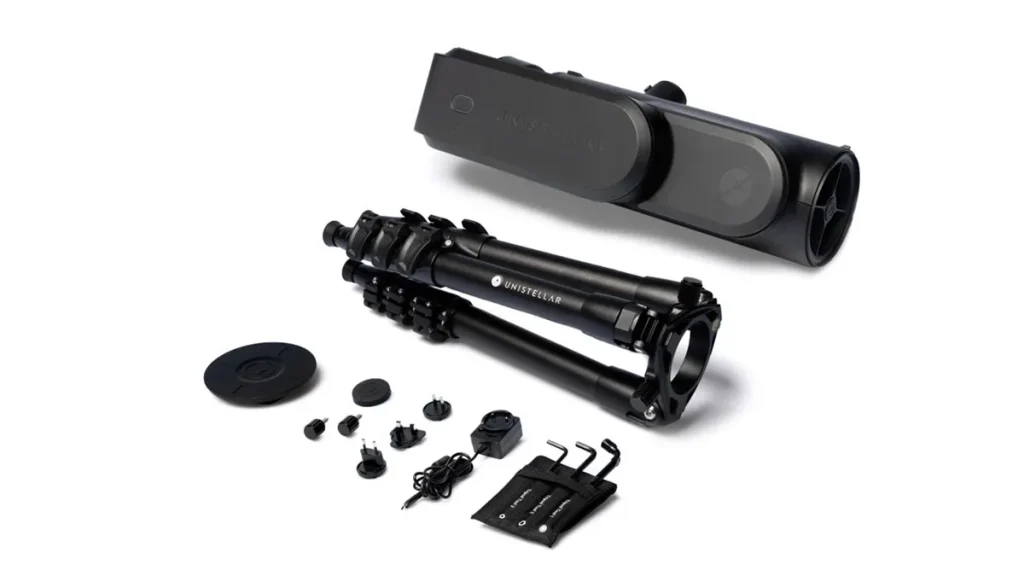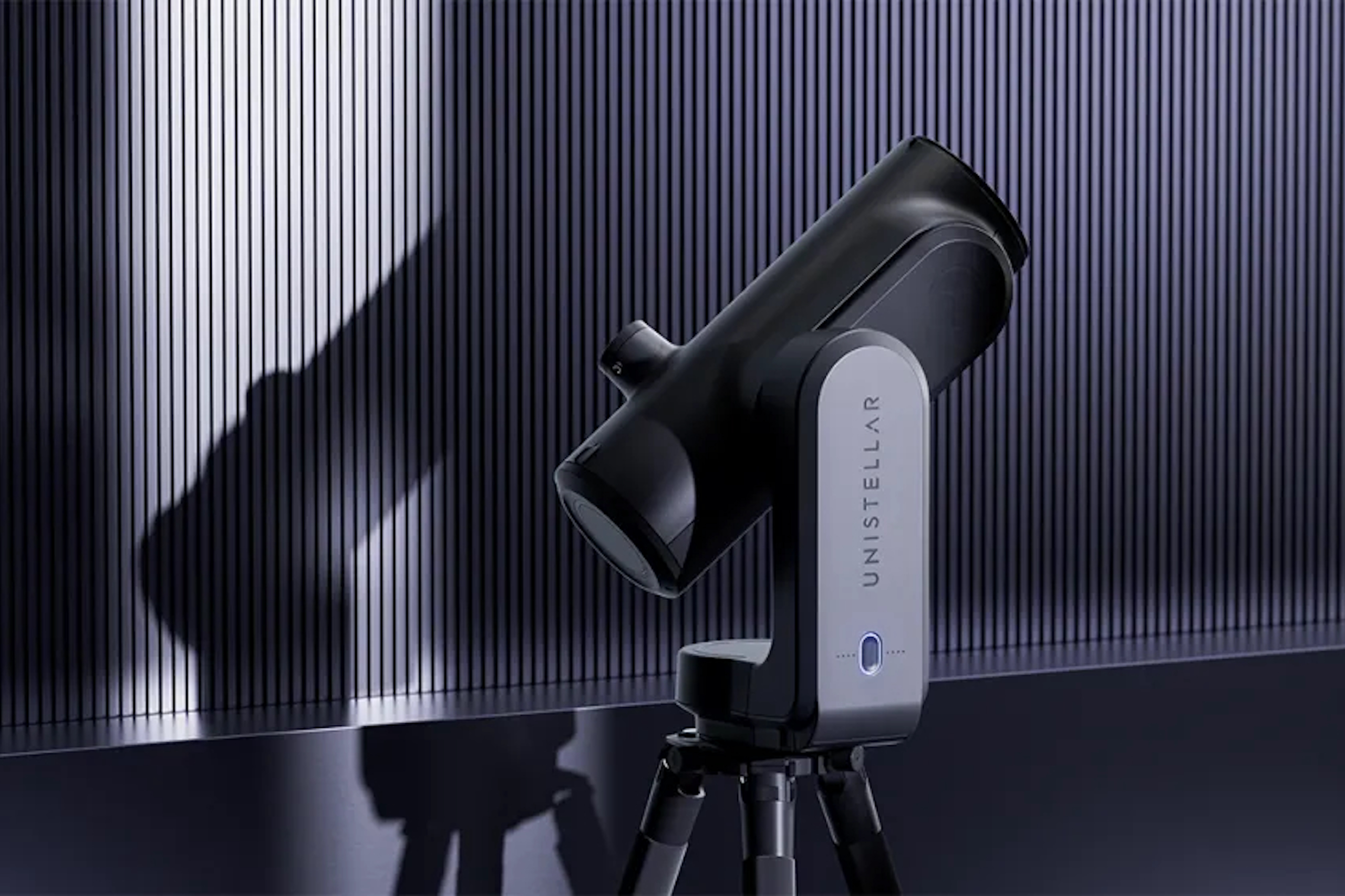Nebula gazing on vacation just got a lot easier.
This month, French telescope maker Unistellar released the new Odyssey telescope in two high-tech versions. Unlike traditional devices, its standard and Pro series models are made for travel with portable designs that include the 8.8-pound device, plus a detachable tripod and set of adjustment tools. More interesting though is the Odyssey’s ability to spot and provide information on over 5,000 celestial objects in space from planets to swirling galaxies.

Image courtesy of Unistellar
The Odyssey is the “first telescope capable of observing both nearby planets and objects situated in the depths of the cosmos,” Unistellar claims in a statement. Both its standard and PRO versions measure 19.9 x 17.1 x 7 inches with a five-hour battery life. They also feature multi-depth technology, patented by the manufacturer, that allows you to easily switch from views of Jupiter’s Great Red Spot to the arms of a whirlpool galaxy, tens of millions of light-years away.
Nikon high-precision optics and “stellar autofocus” are two technologies that play a major role in the creation the smart telescope. The former was co-developed with Nikon to make your cosmic observations easier with no manual adjustments required. The telescope’s stellar autofocus feature, meanwhile, provides sharpness during viewings. Its automated focus system makes high-res stargazing possible by pairing an algorithm with a motorised sensor for clear views of the moon, or even Jupiter.

Image courtesy of Unistellar
In addition, the telescope’s resolving power, fine sampling, and limiting magnitude make it as powerful as it is user-friendly. According to the brand, Odyssey can see 150 million stars. Its resolving power (1.68 arcseconds) relates to the mirror’s capacity to produce intricate images, while the sampling (0.93 arcseconds) indicates its ability to record those details. You can view your sightings via your mobile device or tablets using the Unistellar app.
Unistellar launched in 2015 with a focus on digital astronomical telescopes for everyday people. After winning awards for its smart telescopes—originally including Evoscope and Equinox models—at CES in 2018 and again in 2022, it launched the Odyssey at CES 2024. The standard Odyssey telescope will run you US$2,999 (HK$23,460), while the Pro edition is US$3,999 (HK$31,285). Both are now available on the company’s website. If you’re looking for something a little more down-to-Earth (literally), check out Swarovski Optik’s new AX Visio binoculars that use AI to help you identify wildlife.









